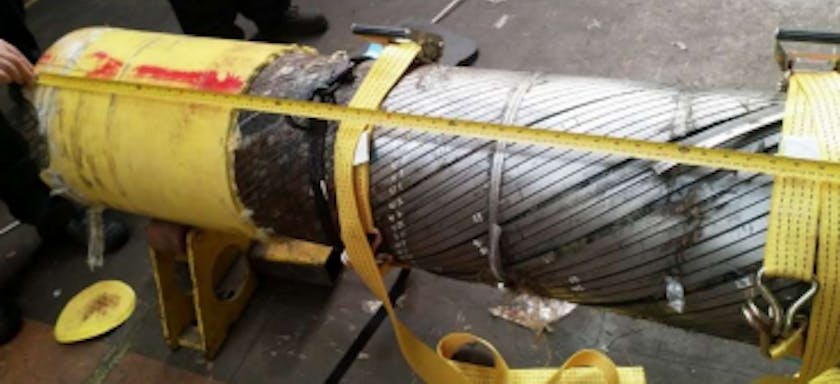Flexible Riser Repair and Dissection Following Exceedance of API Fatigue Limit
EVENT: OTC Brasil
1 Oct 2019
This paper presents detailed learnings into the dissection of a flexible riser section, which had been operating for seven (7) years and subjected to high rates of fatigue damage, after operational field changes. Detailed global and local fatigue analyses were performed to assess the response of the riser system taking into account significant changes between the design and the operational history. These environmental and operational changes were shown to have a negative impact on the fatigue performance of the risers, in particular the top section located inside the bend stiffner.
Fatigue analyses are performed using field measured data such as vessel headings, internal pressures and environmental conditions, aiming to replicate the riser response history and calculate fatigue usage to date. Actual field data are shown to be more onerous than design data and therefore a detrimental fatigue response is expected. Results from detailed fatigue analysis shows that flexible risers fatigue usage were above the maximum allowable of 0.1, as outlined in API [1,2]. The most critical location was the pressure armour wires of the top section, located inside the bend stiffener. A mitigation plan was proposed, including an immediate reduction of internal pressure to reduce the risk of riser failure, and the removal of the fatigued riser top section. After removal of the fatigue critical section, the riser was re-terminated and its fatigue performance reinstated.
The pipe section removed from operation was carefully dissected. Following the dissection, each riser layer was investigated to determine possible signs of degradation. Additionally, fatigue testing of both pressure and tensile armour wires were performed to determine potential fatigue degradation and confirm analyses findings. Dissection and fatigue tests have demonstrated that the pipe condition was better than expected, highlighting conservatisms in design and analyses methodologies.
In-service inspection of flexible riser internal layers is highly complex, with no detailed insight of all the respective layers. Dissection of a flexible riser, in service for seven (7) years and exposed to high rates of fatigue damage, provides valuable information about the state of the different layers comprising the cross section. This is particularly useful since analytical work have shown the riser to have exceeded the fatigue limit of 0.1 as defined per API. The good state of the flexible riser, on the contrary to the prediction, highlights a good level of conservatism in flexible riser design and methodology.
Author

Pedro Viana
Flexible Engineering Manager

About
Pedro was the first employee hired by 2H in Brazil, in January 2004, after graduating from PUC-Rio (Catholic University of Rio de Janeiro). His mechanical engineering studies included 1 year at the Technical University of Munich, Germany, with a dual-country scholarship granted to the best Brazilian engineers. Over the years, Pedro spent various periods of up to 9 months working in projects in 2H US, MY and UK offices, having gathered experience in all major offshore O&G regions. He has been based in the 2H Woking office since 2014, is part of the Local Management Team and leads the global flexible riser business within 2H.
Pedro’s 19 years’ experience ranges from shallow to deepwater risers, from concept design, through to integrity management and life extension and encompasses in particular flexible, rigid and hybrid riser production systems. He has worked on some major 2H projects such as Petrobras P-52, P-55, Guará&Lula-NE, BP Block31 PSVM, BP Tortue, and Total Kaombo, and is a long term sponsor of comprehensive engineering support on Tullow TEN and Jubilee and consultant on various key flexible projects across the 2H globe. Pedro is also part of the API 17J&B (flexibles) Task Group and one of the individual work group leaders.
From concept to installation. Has worked in 2H offices in BR, US, MY and UK, having gathered experience in all major offshore O&G regions.
Insights
Renan Tapias
Senior Flexible Riser Engineer - Eni
Mehrdad Mansour
Subsea Engineering Manager - Tullow Oil


